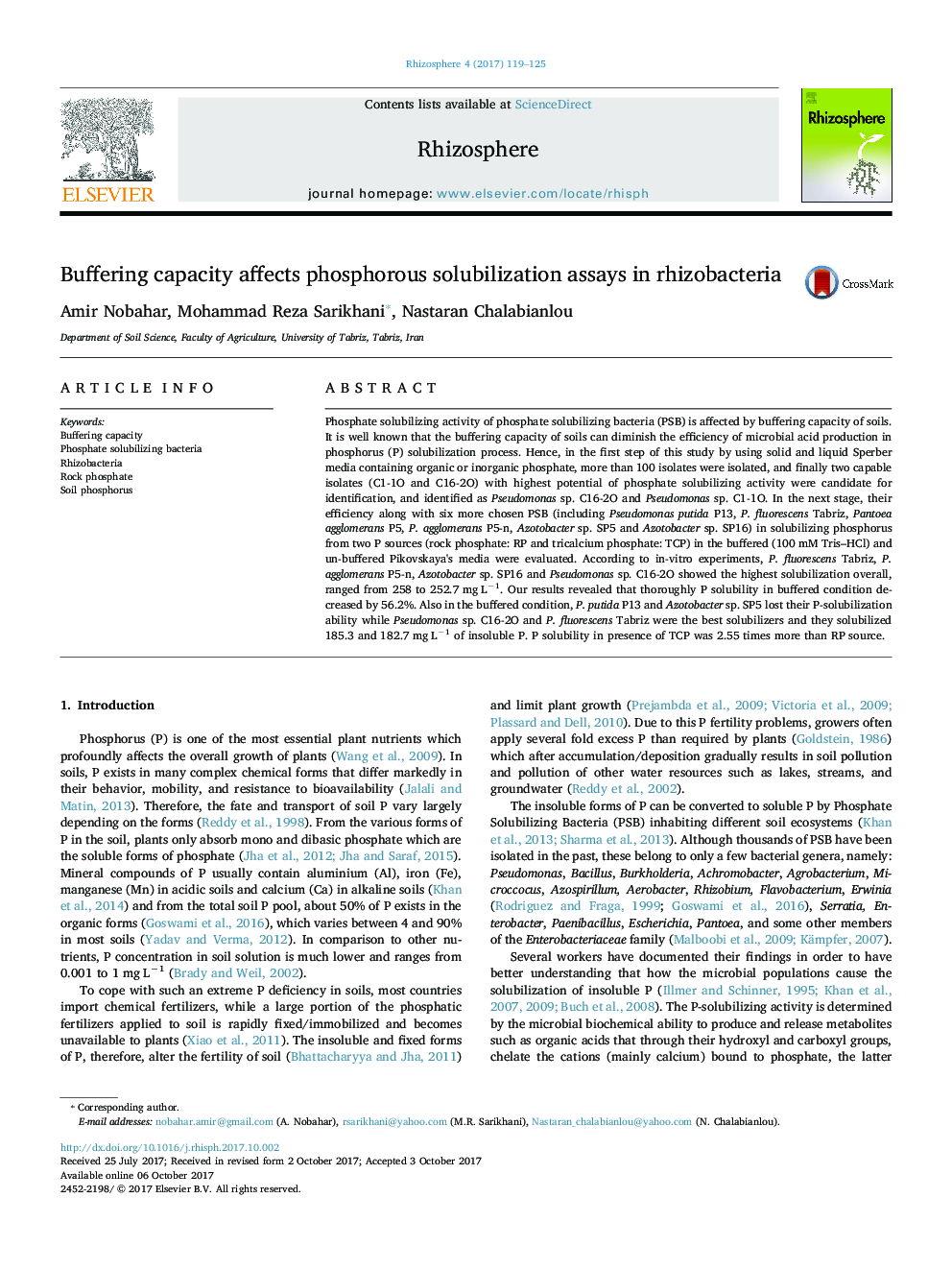| کد مقاله | کد نشریه | سال انتشار | مقاله انگلیسی | نسخه تمام متن |
|---|---|---|---|---|
| 5762814 | 1625040 | 2017 | 7 صفحه PDF | دانلود رایگان |
عنوان انگلیسی مقاله ISI
Buffering capacity affects phosphorous solubilization assays in rhizobacteria
ترجمه فارسی عنوان
ظرفیت بافر در آزمایشات حلالیت فسفری در ریزوباکتریها تاثیر می گذارد
دانلود مقاله + سفارش ترجمه
دانلود مقاله ISI انگلیسی
رایگان برای ایرانیان
کلمات کلیدی
ظرفیت بافری، باکتری های حل کننده فسفات، ریزوباکتریوم، سنگ فسفات، فسفر خاک،
موضوعات مرتبط
علوم زیستی و بیوفناوری
علوم کشاورزی و بیولوژیک
علوم زراعت و اصلاح نباتات
چکیده انگلیسی
Phosphate solubilizing activity of phosphate solubilizing bacteria (PSB) is affected by buffering capacity of soils. It is well known that the buffering capacity of soils can diminish the efficiency of microbial acid production in phosphorus (P) solubilization process. Hence, in the first step of this study by using solid and liquid Sperber media containing organic or inorganic phosphate, more than 100 isolates were isolated, and finally two capable isolates (C1-1O and C16-2O) with highest potential of phosphate solubilizing activity were candidate for identification, and identified as Pseudomonas sp. C16-2O and Pseudomonas sp. C1-1O. In the next stage, their efficiency along with six more chosen PSB (including Pseudomonas putida P13, P. fluorescens Tabriz, Pantoea agglomerans P5, P. agglomerans P5-n, Azotobacter sp. SP5 and Azotobacter sp. SP16) in solubilizing phosphorus âfrom two P sources (rock phosphate: RP and tricalcium phosphate: TCP) in the buffered (100 mM Tris-HCl) and un-buffered Pikovskaya's media were evaluated. According to in-vitro experiments, P. fluorescens Tabriz, P. agglomerans P5-n, Azotobacter sp. SP16 and Pseudomonas sp. C16-2O showed the highest solubilization overall, ranged from 258 to 252.7 mg Lâ1. Our results revealed that thoroughly P solubility in buffered condition decreased by 56.2%. Also in the buffered condition, P. putida P13 and Azotobacter sp. SP5 lost their P-solubilization ability while Pseudomonas sp. C16-2O and P. fluorescens Tabriz were the best solubilizers and they solubilized 185.3 and 182.7 mg Lâ1 of insoluble P. P solubility in presence of TCP was 2.55 times more than RP source.
ناشر
Database: Elsevier - ScienceDirect (ساینس دایرکت)
Journal: Rhizosphere - Volume 4, December 2017, Pages 119-125
Journal: Rhizosphere - Volume 4, December 2017, Pages 119-125
نویسندگان
Amir Nobahar, Mohammad Reza Sarikhani, Nastaran Chalabianlou,
